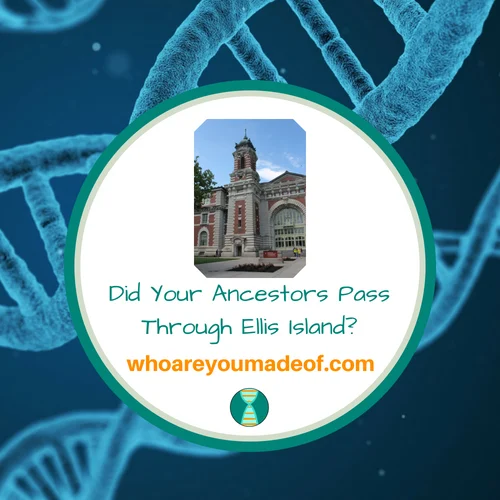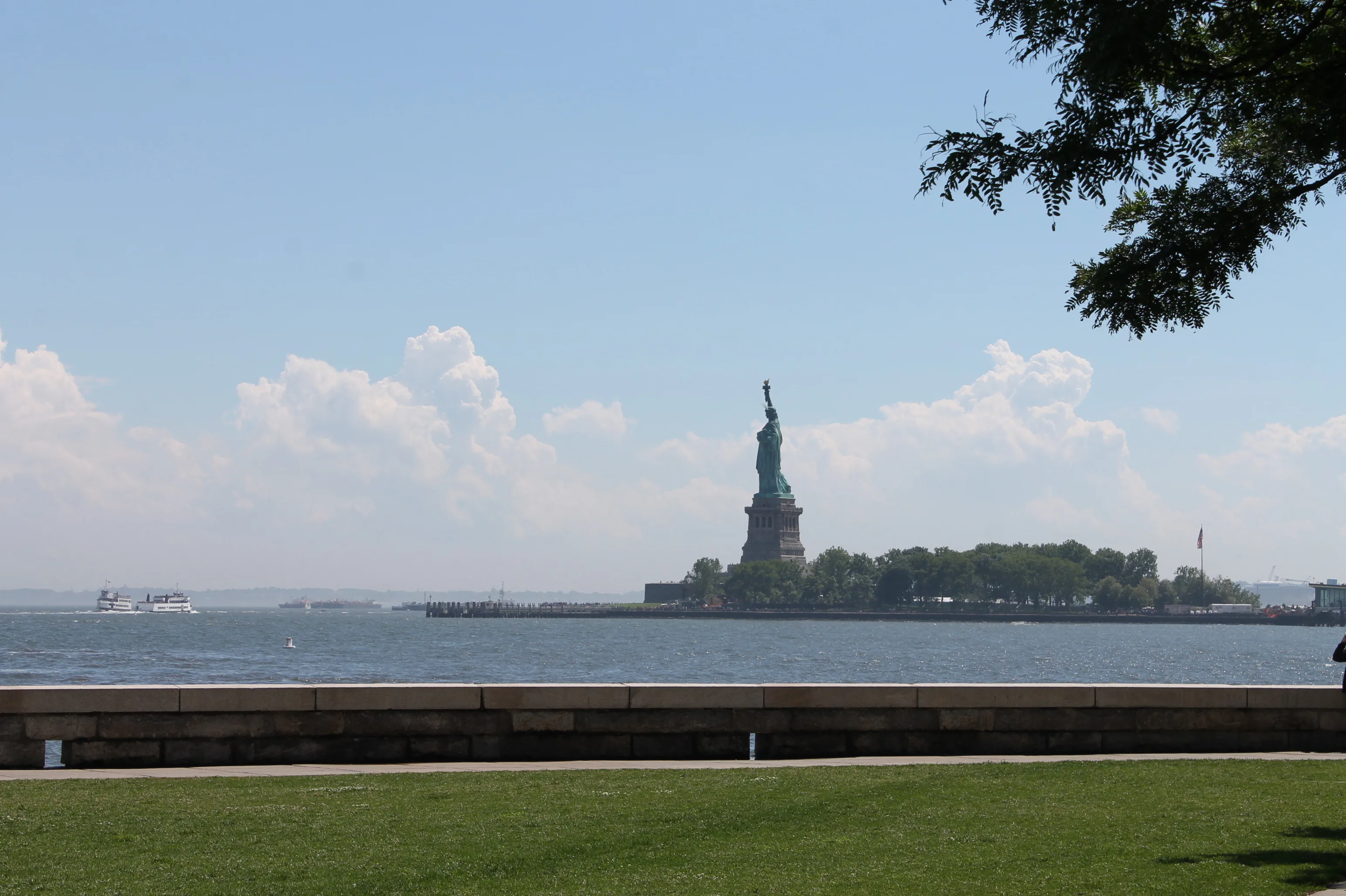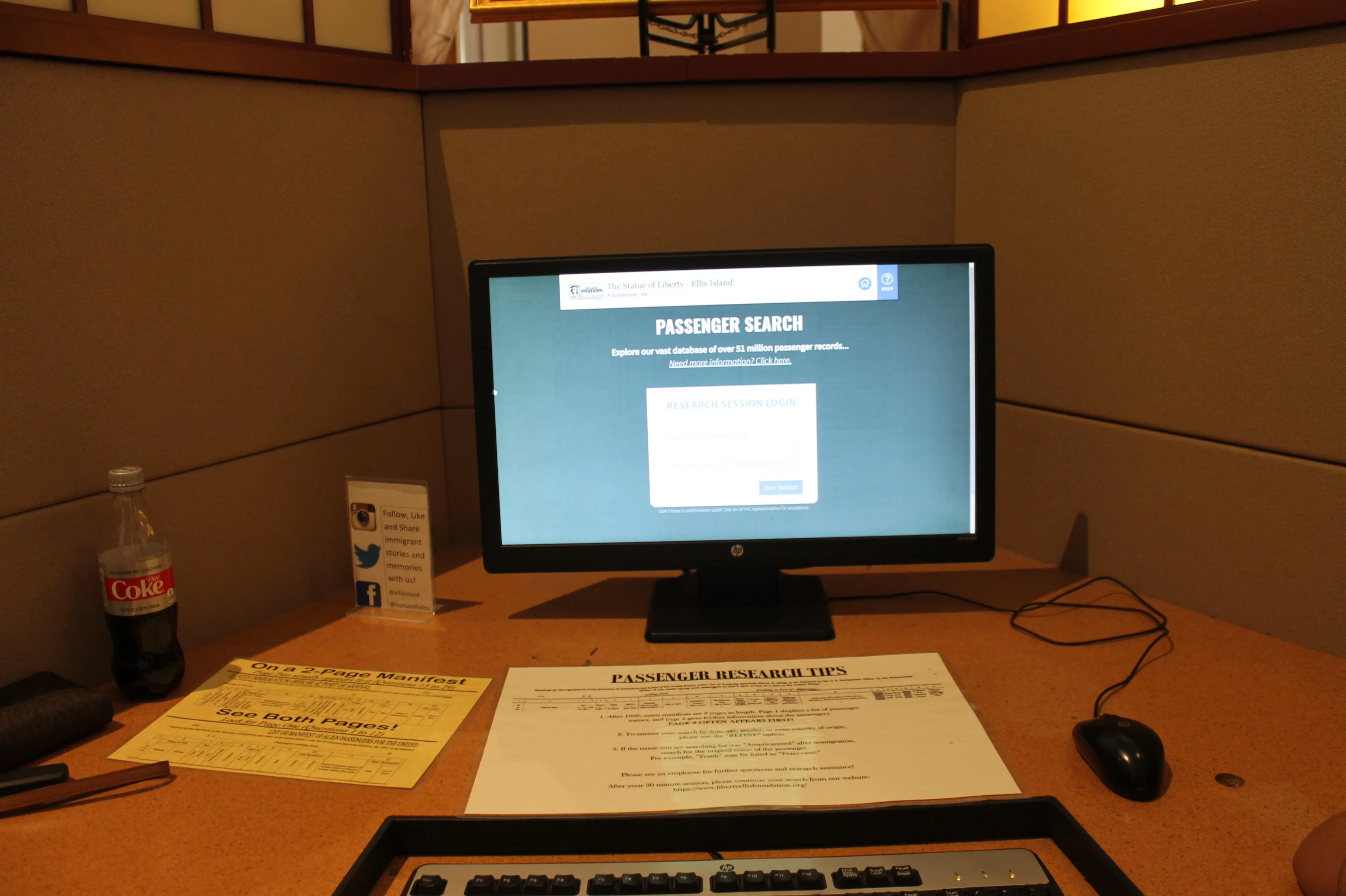If you live in the United States, there is a good chance that you have ancestors who were born somewhere else. Our country is made up of a glorious, complicated, beautiful mix of people from all over the world, and many of these folks have ancestors who passed through Ellis Island on their way towards becoming American.
In this post, you'll learn how to find out whether your ancestors came through Ellis Island, and how to find their records.

My youngest daughter loves reading about history, and when she was younger, she went through a fascination with Ellis Island. She knows all the details about the island, and so during our most recent visit to New Jersey, we had to take the opportunity to visit the island and personally explore Ellis Island, a place famous for welcoming 12 million immigrants to the United States of America.
It was a great opportunity to learn about Ellis Island, and even take some photos for this post. So many people have ancestors who came through Ellis Island that it is estimated that as many as 40% of Americans may be able to trace their family tree to at least one ancestor who came through this immigration station.

Cool tip: Did you know you can get to Ellis Island and the Statue of Liberty from a neat place named "Liberty Park" in New Jersey? Liberty Park offers amazing views of Manhattan and inexpensive, plentiful, and easy parking for access to the ferries to Ellis Island and Liberty Island (i.e. The Statue of Liberty).
Accessing the islands from the New Jersey side will save you so much time and money, especially if you are not staying in New York City. Plus, most of Ellis Island is technically in New Jersey anyway!
Why was Ellis Island created?
For about the first 100 years of our country's history, immigration was not regulated in a meaningful way at the federal level. There were very few restrictions on immigration before the late 1800's, which led states to pass their own immigration laws.
Realizing the desire for a cohesive national strategy to decide who was allowed to enter the US and who would be turned away, the US Supreme Court ruled in 1875 that regulation of immigration was the responsibility of the federal government.
Eventually, the US Congress passed immigration legislation that led to the creation of the Office of the Superintendent of Immigration (est. 1891) under the Department of the Treasury.
This newly formed government agency gradually implemented new policies and procedures and established official immigration stations at borders and ports.
The New York state immigration station, established under the previous state-led immigration policies, was found at Castle Garden, but this station was not large enough to handle an incredible influx of people from Europe - due to economic and political unrest at home - beginning at about 1890.

The federal government thus decided to make Ellis Island the home of a brand-new federal immigration station. While some immigrants entered through other smaller ports or land crossings, Ellis Island processed the majority of immigrants to the United States between 1892-1954.
A total of around 12 million individuals went through Ellis Island, primarily from southern and eastern Europe, but also from Syria, Turkey, and Armenia.
Interesting fact: Passengers traveling first or second class did not have to go through inspections at Ellis Island. The logic was that if the passenger could afford an expensive ticket, then they likely weren't sick and would not be likely to become a public charge.
Unless they were showing obvious signs of illness, these "wealthier" passengers were allowed to go through customs and continue their journey. It was not this simple for the steerage passengers, which is how most people arrived to the US.

Did immigrants have to change their names at Ellis Island?
If you are interested in finding out whether your ancestor passed through Ellis Island, you might be wondering which name you should use to do your search. Many people are under the impression that immigrants were encouraged, or even forced, to change, or "Americanize" their names during their inspection at Ellis Island.
As it turns out, this is a common myth that has no basis in fact. While no one can argue that it never happened, it was not a policy or routine procedure to encourage immigrants to change their names - or even the spellings of their names - during their immigration inspections.
Immigrants to the US have almost always been able to change their names during their naturalization process. Immigrants to the US have never received automatic citizenship.
Instead, they are permitted to enter, and after fulfilling a required period of residency and other requirements, they are allowed to apply for citizenship.
If you are able to locate citizenship applications for your ancestors, also known as applications for naturalization, you may notice a name change.
As I mentioned before, immigrants were not encouraged to change their name when they entered the Ellis Island inspection station. Some immigrants did have a slightly different name than when they left their home country, however, and there is a simple explanation. Immigration officials received ship passenger lists from the companies providing transportation.
The European ports were often located in a country other than a country where the language where your ancestor was from was spoken - imagine a German immigrant boarding a ship at a French port.
The person who bought the ticket was required to give the name of the passenger, and sometimes a slight spelling difference can be attributed to a miscommunication or the clerk's unfamiliarity with the spelling customs in your ancestor's native language.
Can you do a passenger search at Ellis Island?
If you know that your ancestor came through Ellis Island between the years 1892-1954 and you live within a reasonable driving distance to Ellis Island, you might consider taking a day trip to explore the island, the Ellis Island National Museum of Immigration, and to search their databases.
First, you reserve a computer and a desk using a kiosk. You have to pay a small fee, which is currently $7. The kiosk will tell you which research station you can use. You can then use the computer to look up your ancestors. It's quick and easy.

Do you know what is even quicker and easier than going all the way to Ellis Island to look for your ancestors immigration records? You can access the same records online that you can access at Ellis Island - completely for free, which is great for all of us, especially those of us who can't just hop on the ferry during our lunch breaks (i.e. we don't live in Manhattan or Jersey City).
How to do an Ellis Island passenger search online
You don't even have to leave the comfort of your home to see if you can find your ancestor in the Ellis Island database, which you can access using this link: Ellis Island Passenger Search.
For best results, make sure to try alternative spellings for your ancestor's name - even misspellings!
Conclusion
I hope that this post helped you get a basic understanding of the purpose of Ellis Island, and how to find your ancestor's information. I enjoyed my trip to the island, and I hope that if you ever visit the greater NYC area that you consider visiting, too.
If you have any questions about anything that you read in this post, or would like to share your own experience from visiting Ellis Island or finding your ancestor's immigration records, I would love to hear from you in the comments below.
Thanks for stopping by!
